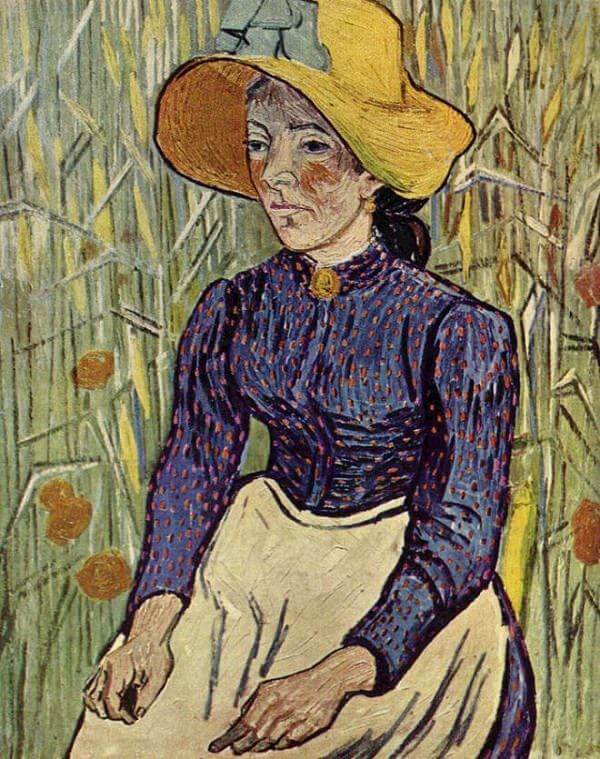Peasant Woman Against a Background of Wheat, 1890 by Vincent Van Gogh

In early June 1890 Van Gogh was in good spirits describing himself as feeling, 'completely calm and in normal condition', when writing to Madame Ginoux in Arles, but just a few weeks later he was devastated by the news that his young nephew and his sister-in-law were both seriously ill. He painted this picture, and another of the same subject at around this time.
Peasant Woman Against a Background of Wheat, 1890 has an echo of his early peasant works done at the beginning of his career, and shows the girl in close focus and sympathetically rendered. There is much of the Symbolist here, and even more so in the other painting that hangs at the National Gallery of Art. The poppies have been reduced to glowing red orbs, picking up on the girl's ruddy cheeks and the dotted pattern of her rich, blue dress, against which her vibrant yellow hat glows. He has applied the paint so thickly that the surface is highly textured and her face almost three-dimensional, while his use of heavy outline sets her apart from the background of wheat.




















